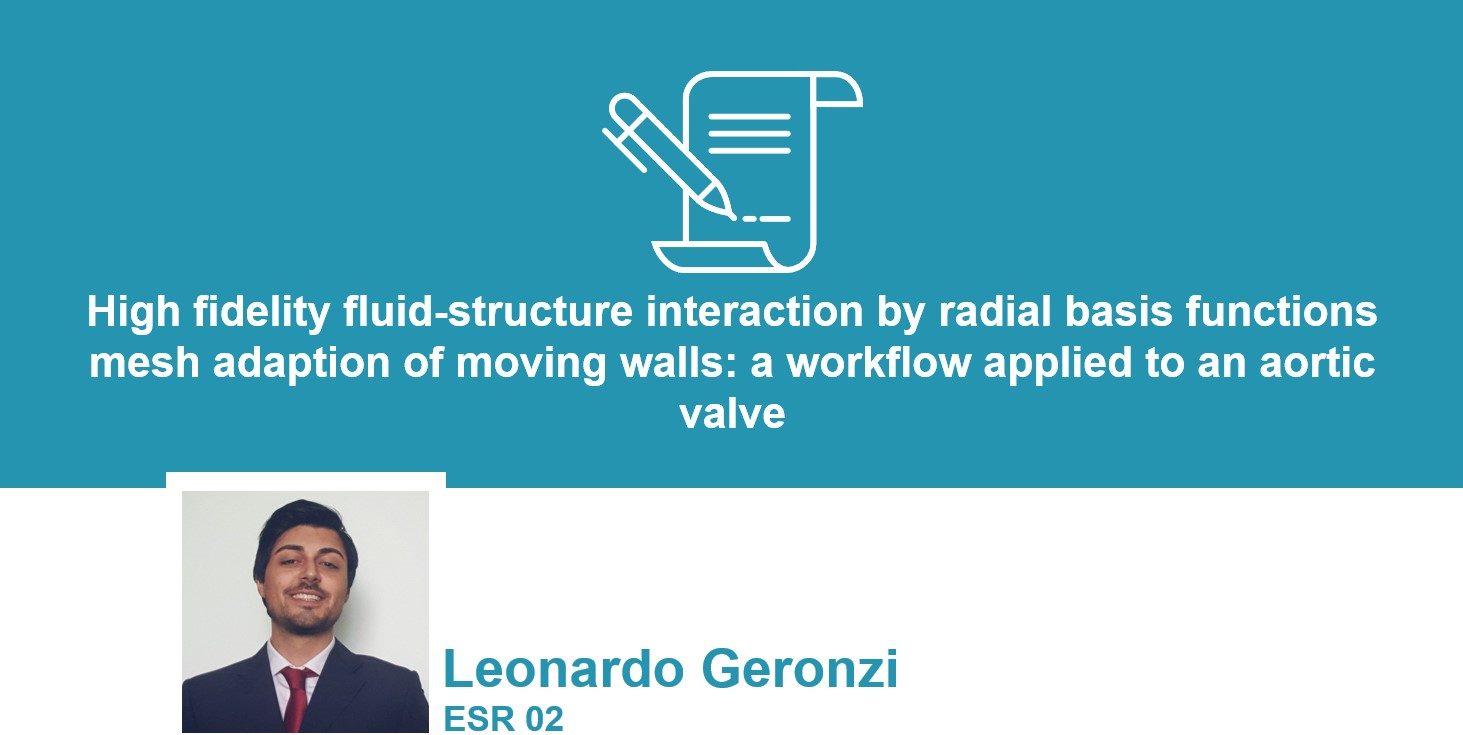First MeDiTATe project publication. High fidelity fluid-structure interaction by radial basis functions mesh adaption of moving walls: a workflow applied to an aortic valve

Leonardo Geronzi, Early Stage Researcher 02 in the MeDiTATe project, published the paper titled High fidelity fluid-structure interaction by radial basis functions mesh adaption of moving walls: a workflow applied to an aortic valve in the Journal of Computational Science.
This work was developed in collaboration with Emanuele Gasparotti, Katia Cappellini and Simona Celi from BioCardioLab (Bioengineering Unit, Fondazione Toscana “G. Monasterio”, Heart Hospital, Massa, Italy), and Ubaldo Cella, Corrado Groth, Stefano Porziani and Marco Evangelos Biancolini from the Department of Enterprise Engineering “Mario Lucertini” (University of Rome Tor Vergata, Roma, Italy).
The open access full text is available here, while the article abstract is reported below.
Fluid-Structure Interaction (FSI) can be investigated by means of non-linear Finite Element Models (FEM), suitable to capture large deflections of structural parts interacting with fluids, and Computational Fluid Dynamics (CFD). High fidelity simulations are obtained using the fine spatial resolution of both the structural and fluid computational grids. A key enabler to have a proper exchange of information between the structural solver and the fluid one is the management of the interface at wetted surfaces where the grids are usually non-matching. A class of applications, known also as one-way FSI problems, involves a complex movement of the walls that is known in advance as measured or as computed by FEM, and that has to be imposed at the boundaries during a transient CFD solution. Effective methods for the time marching adaption of the whole computational grid of the CFD model according to the evolving shape of its boundaries are required. A very well established approach consists of a continuum update of the mesh that is regenerated by adding and removing cells to fit the evolution of the moving walls. In this paper, an innovative method based on Radial Basis Functions (RBF) mesh morphing is proposed, allowing the retention of the same mesh topology suitable for a continuum update of the shape. The proposed method is exact at a set of given key configurations and relies on shape blending time interpolation between key frames. The study of the complex motion of a Polymeric-Prosthetic Heart Valve (P-PHV) is presented using the new framework and considering as a reference the established approach based on remeshing.
